I know a lot of people who love to punch holes in walls, and better yet, knock down the entire thing. Give them a sledgehammer, or better yet, a Sawzall (reciprocating saw), and they proceed to bash and cut to their hearts’ content, with seemingly no worries that they might cause irreparable damage. I’m not one of those people. I detest having to put a hole in a wall. Even small holes, like the holes you need to drill to run speaker wires through the house. I’m the coward who worries that I’m drilling in the wrong place, or I’ll never get the hole patched properly, or repainted with the right color.
For me, pruning plants is much the same. The intellectual part of my brain knows the process is necessary to maintain a healthy garden, but the emotional part of me, deep in the amygdala of my brain, starts releasing stress hormones like cortisol and adrenaline, both of which cause a flight reaction. For the past three seasons I’ve demonstrated that I will avoid the flight symptoms -- including increased heart rate, anxiety, and increased blood glucose concentrations -- by avoiding the whole thing. In fairness, the first season I didn’t prune or cut back out of ignorance, and because I didn’t have any flowers or shrubs big enough to need it.
Unfortunately, you can’t properly maintain your garden without pruning, cutting back, deadheading, and all the rest of the techniques that involve cutting down the flowers and plants you worked so hard to grow. This season I’ve tried to “man up” and do some pruning. Pruning is the small trimming that allows your plants to look better during the season. Cutting back is the major surgery done once a year, in the fall or spring, when you cut the plants down to the ground, helping them properly grow back to be healthy next season.
Here are a few examples of my pruning. In my post, It’s Getting Crowded in Here, I highlighted the blue sedge grass bordering my back bed and claimed that it (the grass) was about to eat my astilbe plants. This week I grabbed my snips and my gardening scissors, took a deep breath, and gave the grass a haircut. Here’s the before and after.
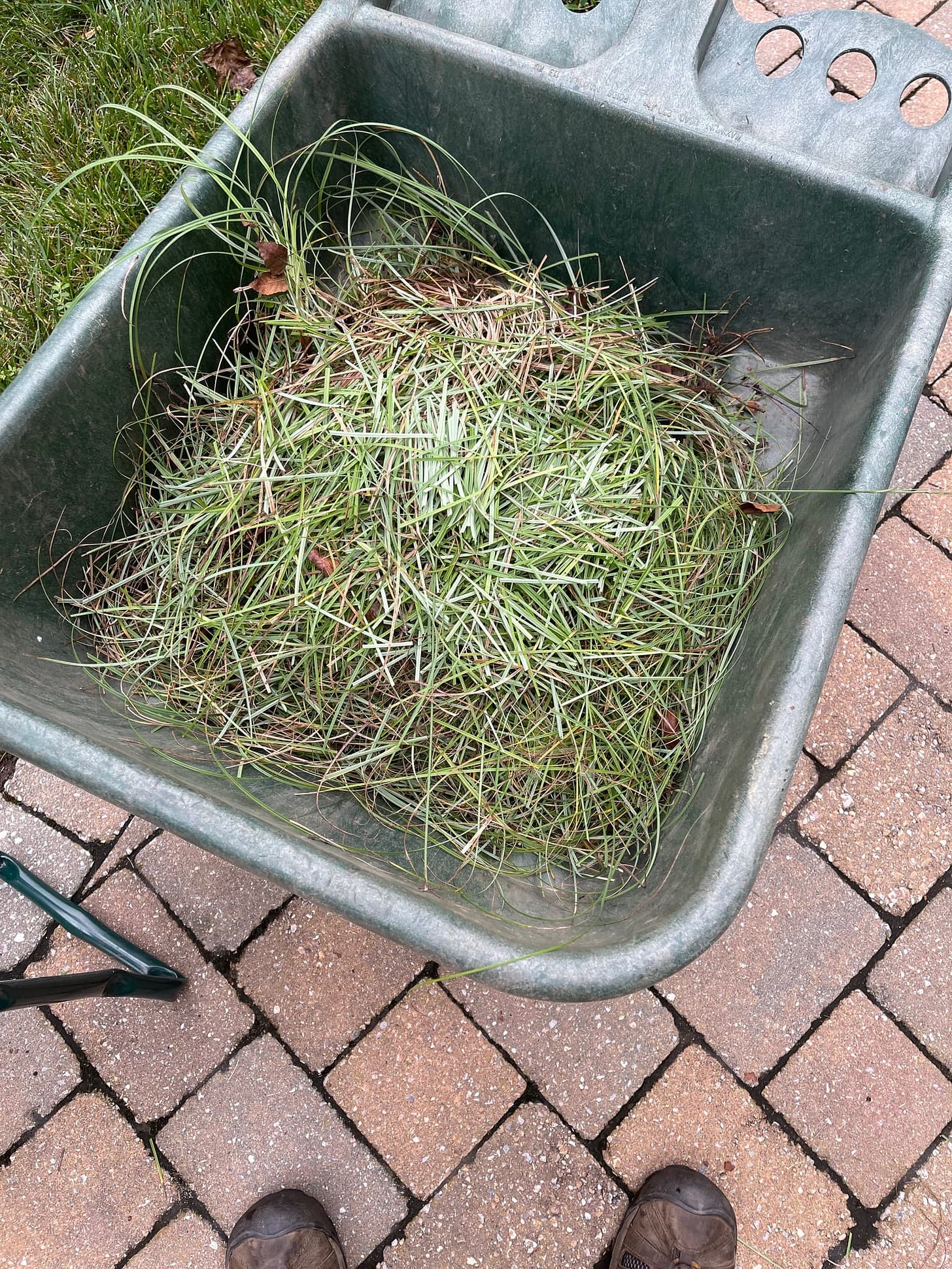
Along the same lines, last month I screwed up my courage and pruned my Japanese maple tree. I watched a dozen YouTubes about how to do it and starting from underneath the tree, I began thinning and cutting away branches. The tree is right at the center of the garden and if I screwed it up, I would be staring at my mistake for years. Fortunately, it turned out great.
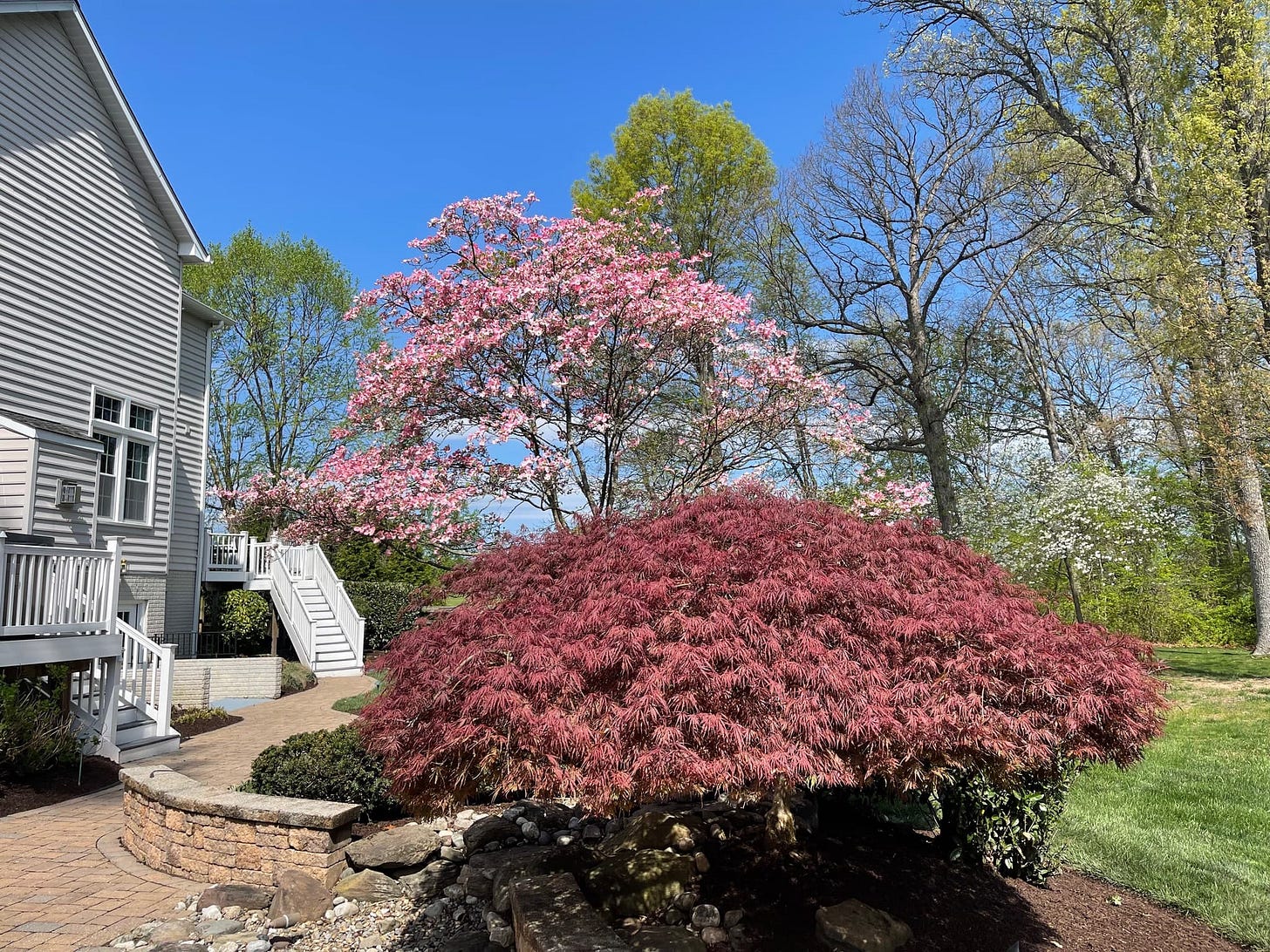
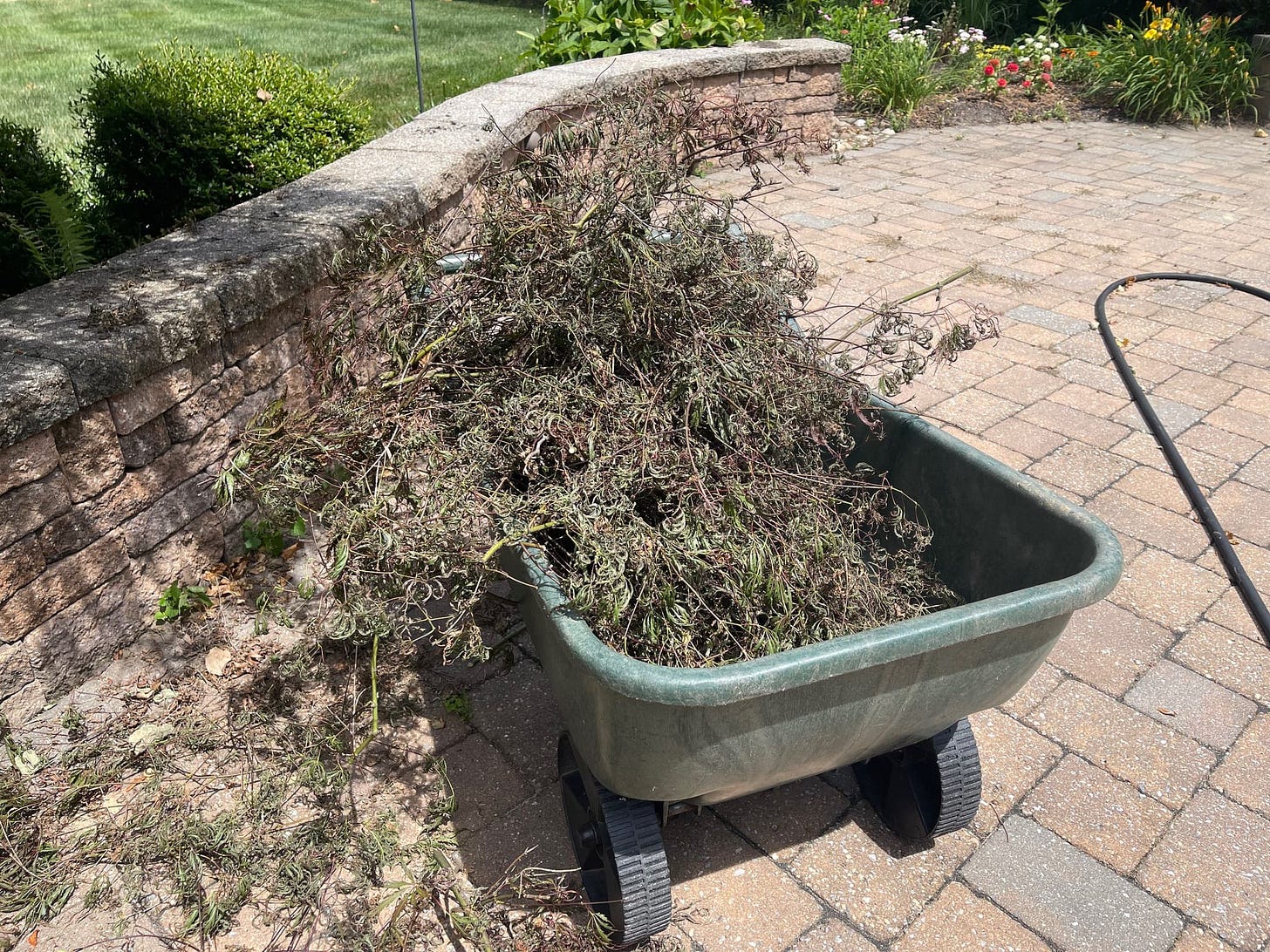
In other news, I’ve been moving some plants around in the garden for a variety of reasons, none of which (in case you’re wondering) was because I was bored. I had two extra Solomon’s seal plants left over from when I originally planted them in the shade side of waterfall bed. The two plants ended up at the bottom of my steps bed where they did just fine, but I never felt they looked good there. After studying the situation for about one year and two months, I thought I would move these two good soldiers over with the rest of the Solomon’s seal. So far, they seem to have withstood the stress of the move, even though digging in the hard clay was not easy. They now look much better with their friends at the shade side of the waterfall bed.
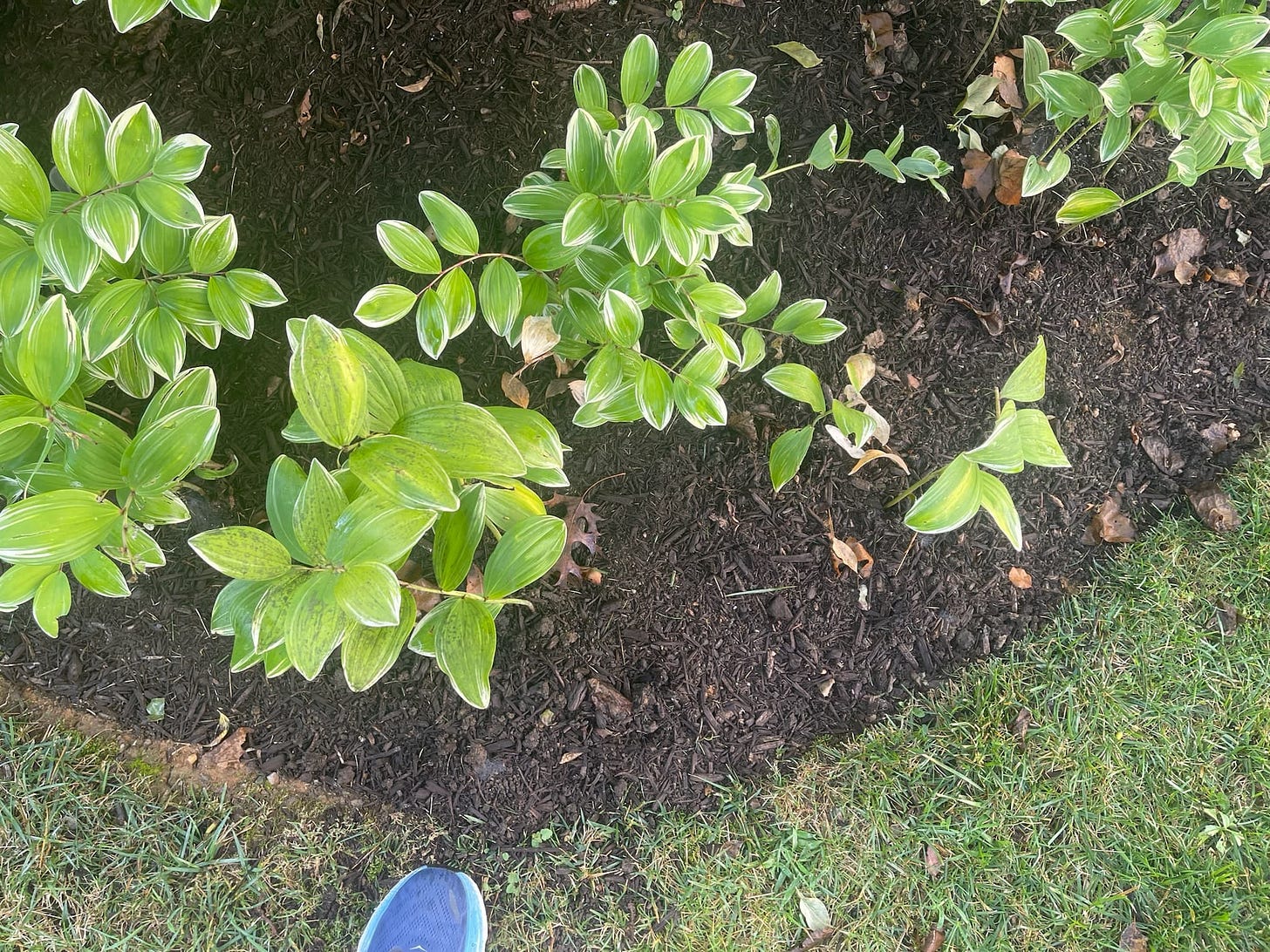
I recently wrote about how a coneflower plant had flopped on top of my panicle hydrangea in the sun bed (It’s Getting Crowded in Here). After taking two different classes in landscape design and consulting with several landscape architects, I moved the coneflower plant four feet to the right in the bed. I am BRILLIANT! I showed the photos of the hydrangea flowers last week, but here’s a look at the coneflower after I moved it. It was flopping before I moved it and it doesn’t seem to be flopping any worse, so I’ll call this a small victory…. for now.
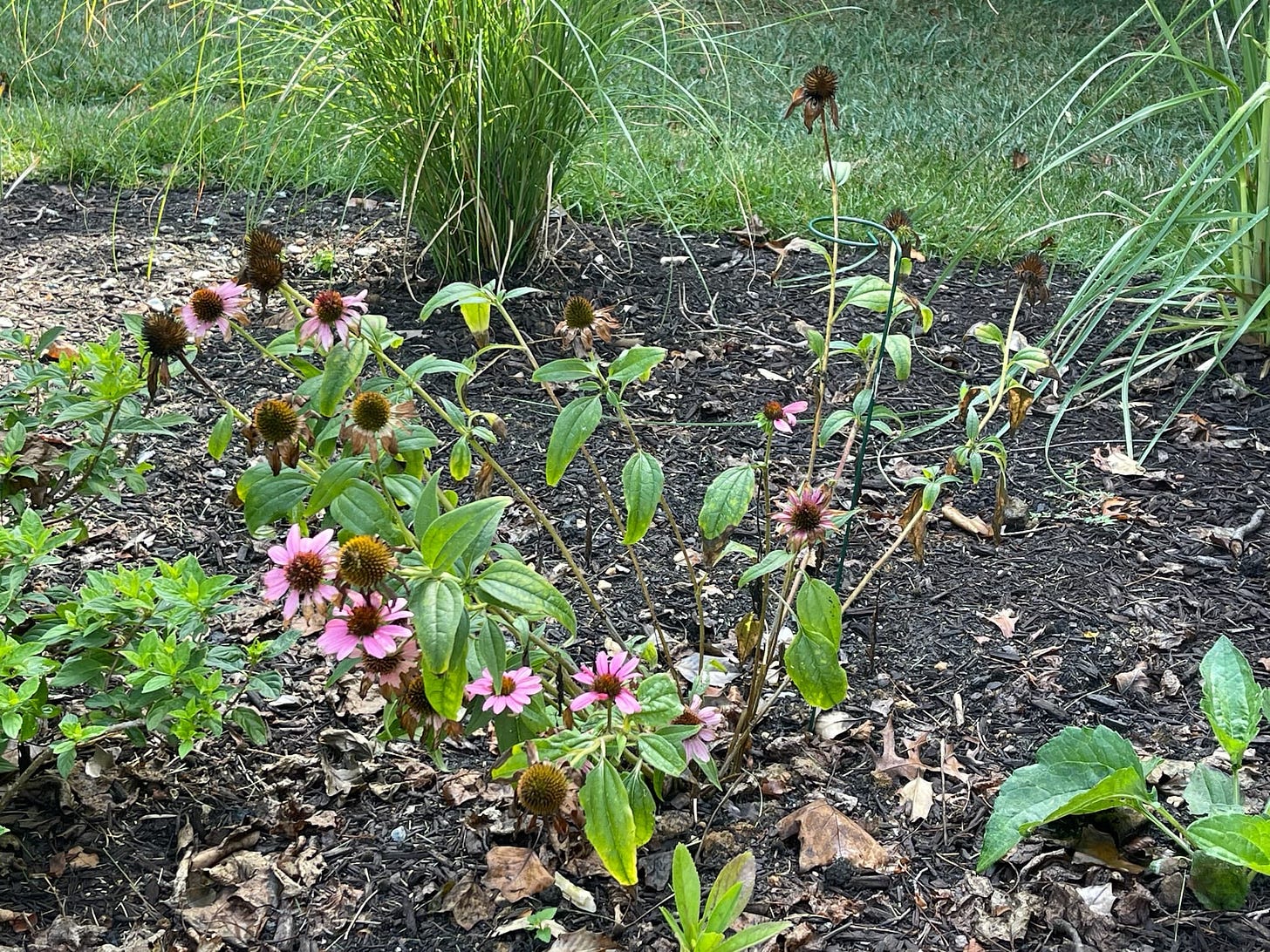
And finally, under the category of random garden news, I present two bits of exciting information. First, we have had a sighting of the first turtlehead flower. I always appreciate the first flower to make an appearance. It must be kind of lonely being the first. How brave!
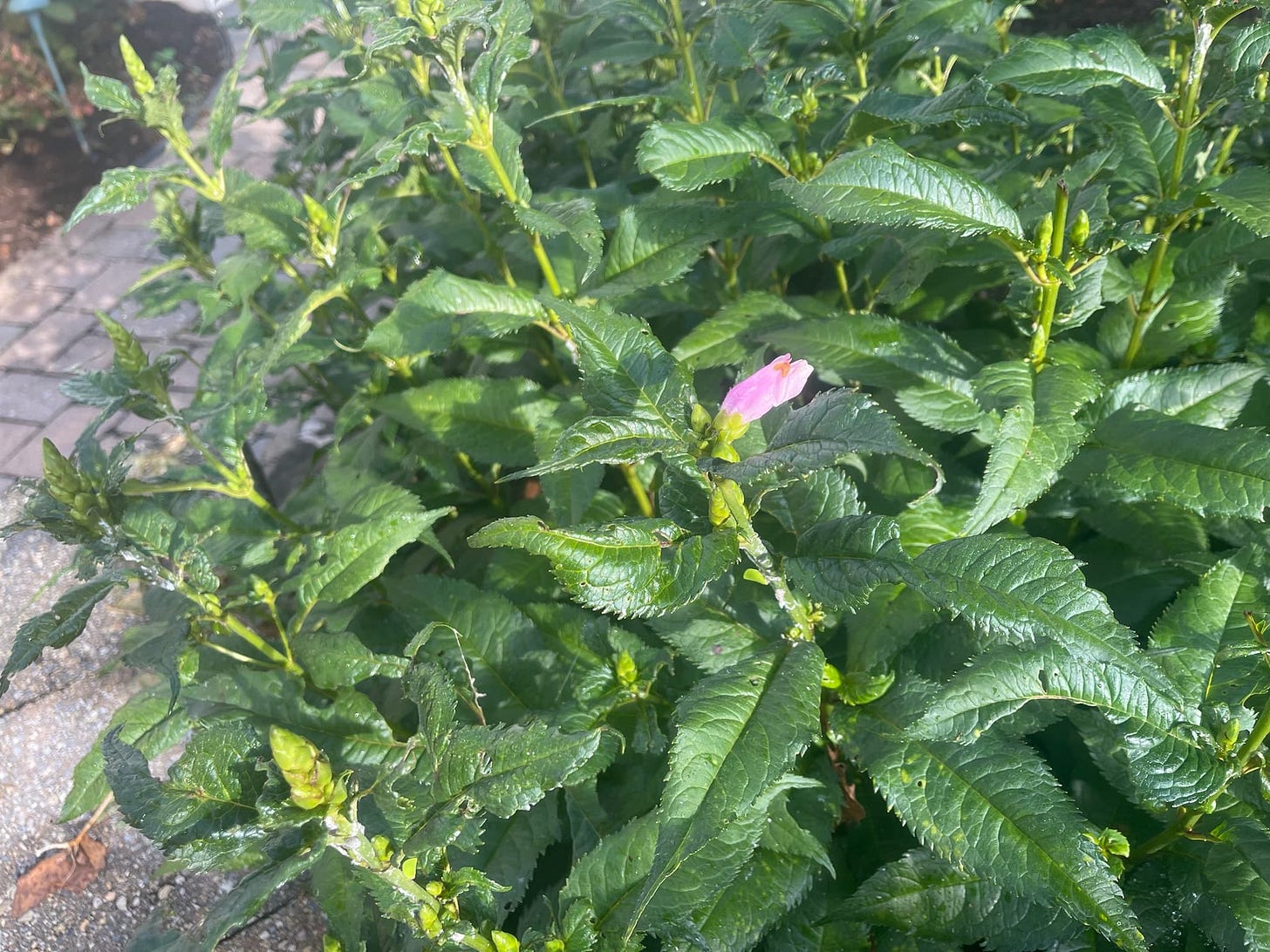
The last piece of random garden news is that apparently it is time for the bark on my crape myrtle tree to start shedding, or as it says online, exfoliating. The good news is that as the bark comes off the tree, it reveals a beautiful new bark underneath that is prized by gardeners everywhere. As for myself, I’m pretty sure I haven’t given the new bark the attention it deserves because I am too busy cleaning the old bark out of my flower beds, and worrying about the total mess the crape myrtle flowers are going to make in my garden when they come down in just a few weeks.
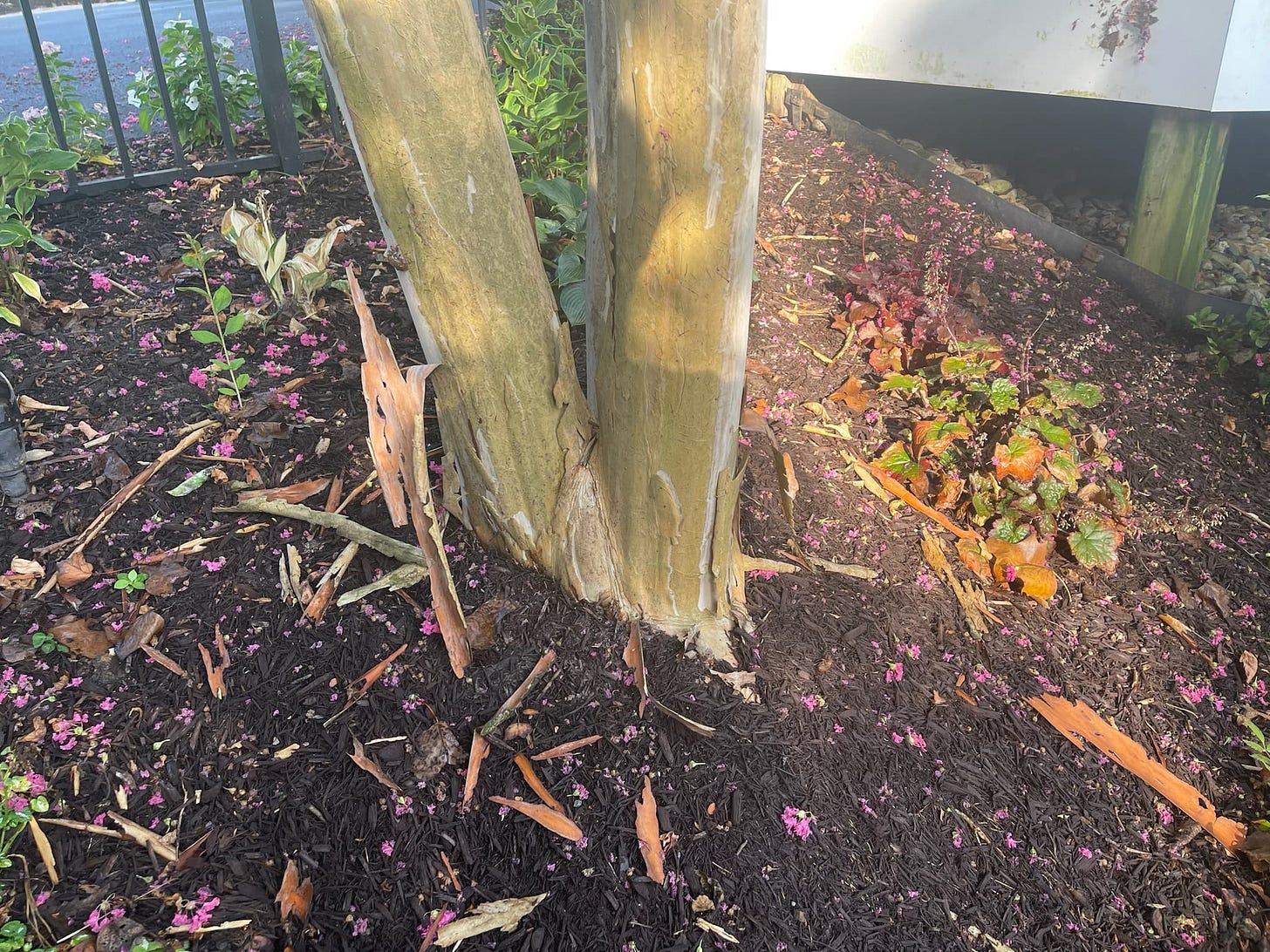
That’s about it for this post. I should have mentioned that while I’m doing some pruning now, I’ll probably wait until next spring to do the serious cutting back. I’ll let many of the plants hang around during the winter to feed the birds and provide vertical interest during the winter.
Thanks for reading my newsletter, The Painful Education of a Type A Gardener. If you feel the need to share this post, or other posts, with someone you know, simply click on the SHARE button in the post. To see past posts, you can navigate to the archives by clicking on the small picture of me at the top of the post.

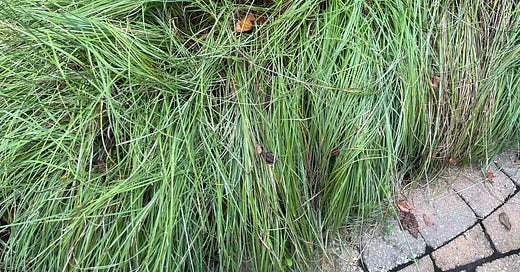



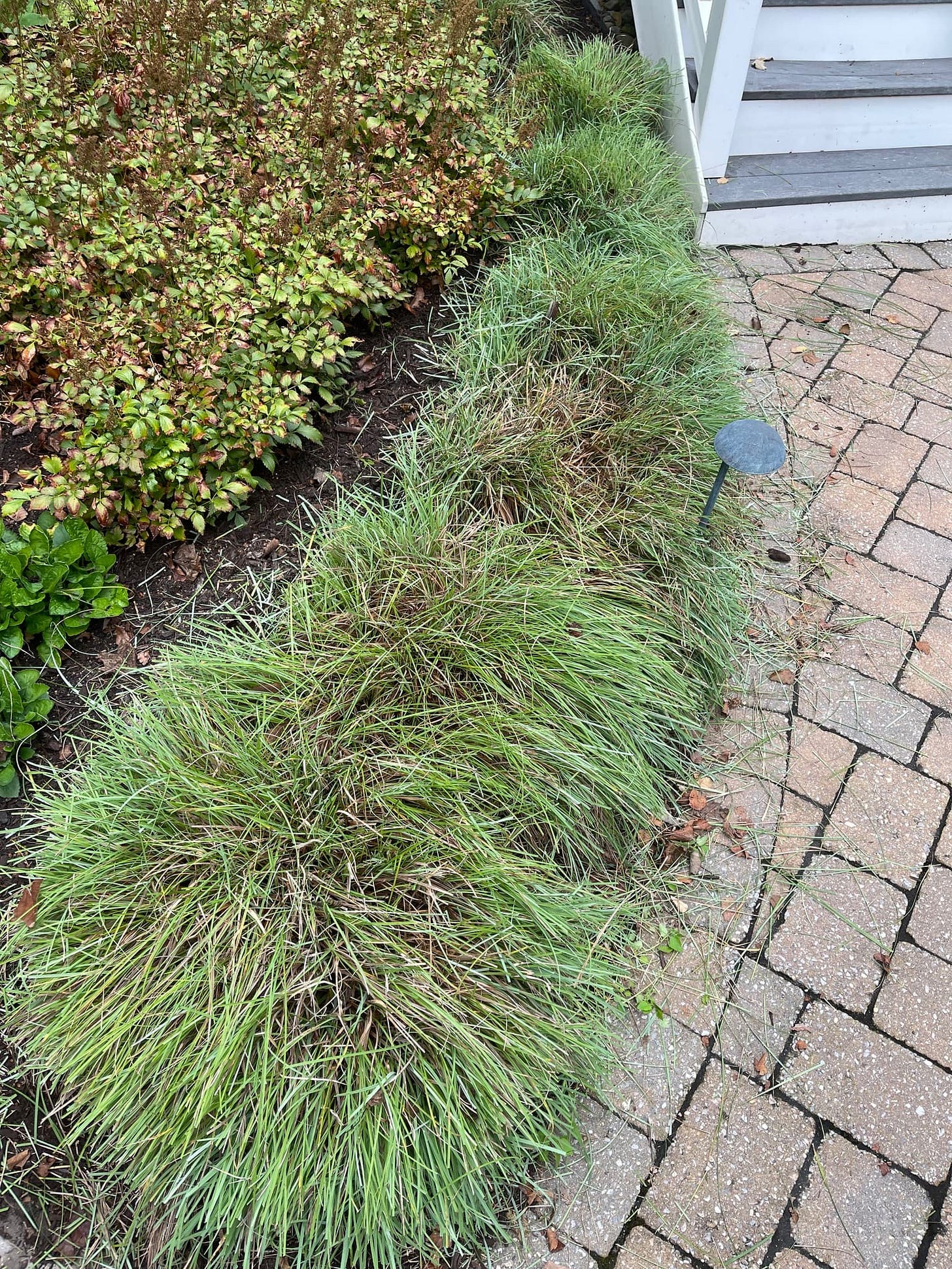
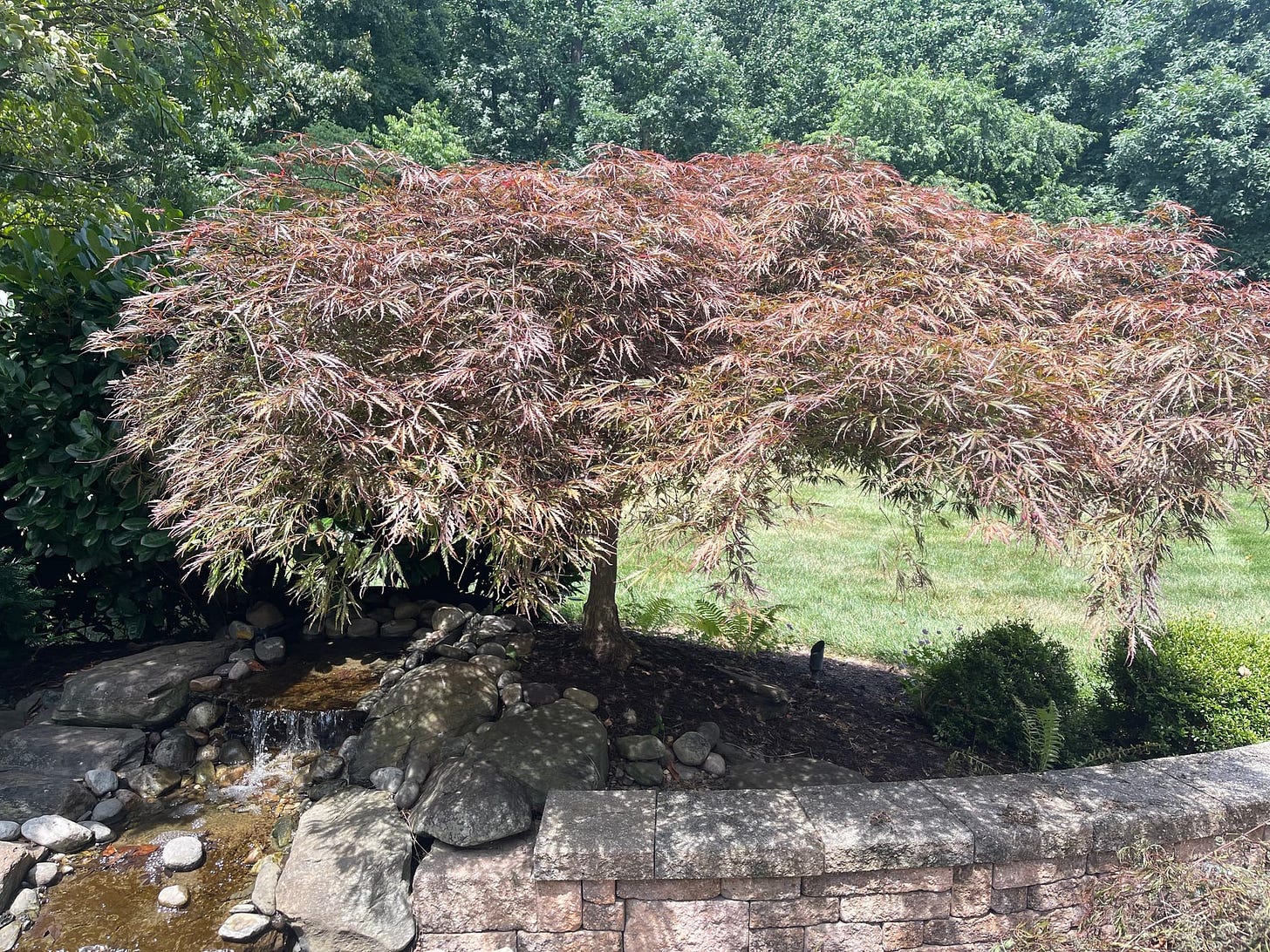
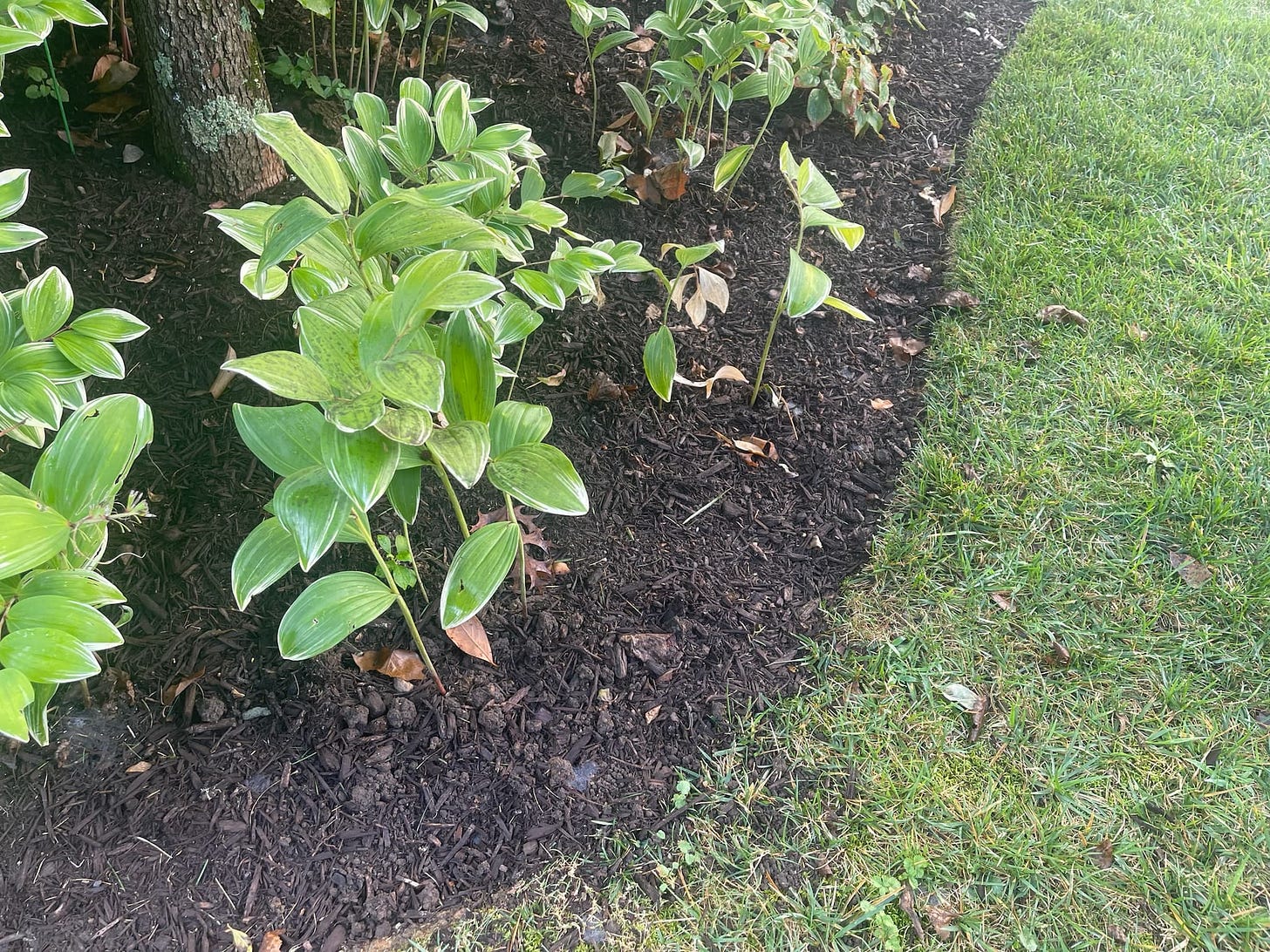
Hi Ken,
Love reading your posts.
Augh, the agony of pruning.